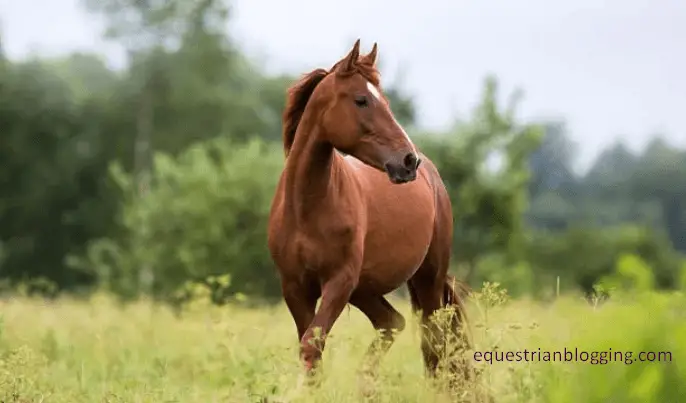Groundwork with horses involves training techniques performed from the ground to build trust and obedience. From in-hand work to liberty training, these exercises enhance the relationship between horse and handler, improving skills and communication before riding.
By starting with basic movements like asking the horse to step back and progress to more advanced tasks with obstacles, groundwork establishes a solid foundation for further training. Regular practice and repetition in groundwork can benefit horses of all ages, aiding in their physical and mental development and strengthening the bond between horse and handler.
Whether done daily, weekly, or monthly, consistent groundwork sessions contribute to a harmonious partnership and a well-rounded equine education.
What Is Ground Work With Horses
What is Ground Work with Horses: Groundwork involves training horses from the ground, excluding saddle work. It encompasses in-hand, lungeing, long-reining, liberty training, and horse agility.
Definition Of Groundwork:
Groundwork refers to any training conducted with horses from the ground, excluding activities done under saddle. This can include in-hand work, lungeing, long-reining, liberty training, and horse agility.
Types Of Groundwork:
- In-hand work
- Lungeing
- Long-reining
- Liberty training
- Horse agility
Benefits Of Groundwork:
- Strengthens the bond between horse and handler
- Improves communication and understanding
- Enhances obedience and responsiveness
- Increases trust and respect
- Develops the horse’s balance and coordination

Getting Started With Ground Work
Ground work with horses involves various training techniques done from the ground. It is essential for establishing a strong foundation of trust and respect between you and your horse.
Starting With Basic Exercises
Begin by standing in front of your horse and prompting them to move their front feet backward. Reward small steps and gradually increase the difficulty by introducing obstacles like poles.
Progressing To Advanced Techniques
As your horse becomes more responsive, advance to lunging, long-reining, liberty training, and agility exercises. This will enhance your communication and connection with the horse.
Building Trust And Respect
- Consistency is key in building trust with your horse.
- Use positive reinforcement to encourage desired behaviors.
- Respect your horse’s boundaries and always prioritize their well-being.
Regular groundwork sessions help strengthen the bond between you and your horse, improving performance under saddle.
Common Ground Work Exercises
Discover a variety of effective and engaging ground work exercises for horses. Enhance your relationship with your horse and build trust through in-hand work, long-reining, and more. Start with simple steps and gradually increase difficulty to achieve success and relaxation.
Ground work with horses is an essential part of their training and development. These exercises not only help build trust and create a strong bond between you and your horse, but they also improve their overall responsiveness and obedience. In this section, we will explore some common ground work exercises that you can incorporate into your training routine.
Back Up And Yield
One important exercise in ground work with horses is teaching them to back up and yield. This exercise helps improve their responsiveness to your cues and establishes you as the leader. To start this exercise, stand in front of your horse and use a light pressure on their chest to ask them to step back. Encourage them to take small steps and reward them for their efforts. As they become more comfortable, you can gradually increase the difficulty by asking them to back up over poles or other obstacles.
Disengaging The Hindquarters
Another valuable exercise in ground work is disengaging the hindquarters. This exercise helps improve your horse’s flexibility and control over their hind end, which is essential for maneuvers such as turning and stopping. To perform this exercise, stand by your horse’s shoulder and use gentle pressure on their hindquarters to ask them to yield and cross their hind legs. Reward them for their effort and gradually increase the difficulty by asking for more steps or sharper turns.
Changing Direction Exercise
The changing direction exercise is a great way to improve your horse’s agility and responsiveness to your cues. Start by walking alongside your horse in a straight line and then gently ask them to change direction by applying light pressure on their shoulder or by slightly turning their head. Reward them for their prompt response and gradually increase the difficulty by asking them to change direction at a faster pace or in a smaller space.
In conclusion, these common ground work exercises are important for building trust, improving responsiveness, and establishing a strong foundation in your horse’s training. Incorporate these exercises into your routine to enhance your horse’s skills and create a harmonious partnership between you and your equine companion.

Ground Work For Specific Horses
Ground work for horses is an essential aspect of their training and overall well-being. Different horses, such as senior and green horses, require specific groundwork exercises tailored to their individual needs and abilities. By understanding and implementing the appropriate ground work for each type of horse, you can build trust, address behavioral issues, and improve their physical and mental health.
Groundwork For Senior Horses
When working with senior horses, it’s important to consider their age-related limitations and adjust the groundwork exercises accordingly. These exercises should focus on maintaining the horse’s flexibility, balance, and muscle tone, as well as promoting mental stimulation.
Groundwork For Green Horses
Green horses, or those who are in the early stages of training, require specific groundwork techniques to establish a solid foundation for their future development. Gentle and patient handling, desensitization to various stimuli, and teaching basic obedience are crucial aspects of groundwork for green horses.
Tips For Effective Ground Work
Groundwork with horses can be an essential aspect of their training and development. It helps build trust and understanding between the horse and the handler, leading to a better partnership. By incorporating a few key tips, you can make your groundwork sessions more effective and enjoyable for both you and your horse.
Consistency And Repetition
Consistency and repetition are crucial for effective groundwork with horses. By consistently practicing the same exercises and techniques, you reinforce the desired behaviors and create a predictable environment for the horse. Repetition helps the horse understand what is expected of them and allows them to become more confident in their responses.
Using Positive Reinforcement
Positive reinforcement is a powerful tool in groundwork training. By rewarding the horse for correct responses and behaviors, you encourage them to repeat those actions. This can be in the form of verbal praise, treats, or gentle pats, creating a positive association with the training process. It’s essential to use positive reinforcement consistently to reinforce the desired behaviors.
Reading Horse’s Body Language
Understanding and interpreting the horse’s body language is crucial during groundwork. By observing their posture, facial expressions, and movements, you can gauge their comfort level and willingness to participate. This allows you to adjust your approach and ensure that the horse remains relaxed and engaged throughout the training session.

Frequently Asked Questions Of Ground Work With Horses
What Is Ground Work With A Horse?
Groundwork with a horse involves training from the ground, separate from riding, including in-hand work, lunging, and liberty training.
How Often Should You Do Ground Work With Your Horse?
Practice ground work with your horse as often as possible for better relationship and saddle performance.
How Do You Start Groundwork With Horses?
To start groundwork with horses, stand in front of your horse and ask them to step back with their front feet. Reward them for their efforts and gradually increase the difficulty by adding obstacles like poles. Practice as often as you can to build a strong relationship with your horse.
What Is Ground Work For Senior Horses?
Ground work for senior horses involves exercises like yielding, backing up, and working on responsiveness. It’s done in a halter and lead rope, promoting focus and obedience. Starting with small steps and gradually increasing difficulty, it’s important to reward the horse’s efforts.
Regular practice strengthens the relationship.
Conclusion
Groundwork with horses is a valuable training technique that can be done from the ground instead of under saddle. It includes various exercises such as in-hand work, lungeing, long-reining, liberty training, and horse agility. By practicing these exercises regularly, you can establish a stronger bond and relationship with your horse, which will ultimately reflect in the saddle.
So, whether you have a green bean or a senior horse, incorporating groundwork into your training routine is essential for building trust and improving their overall performance.

